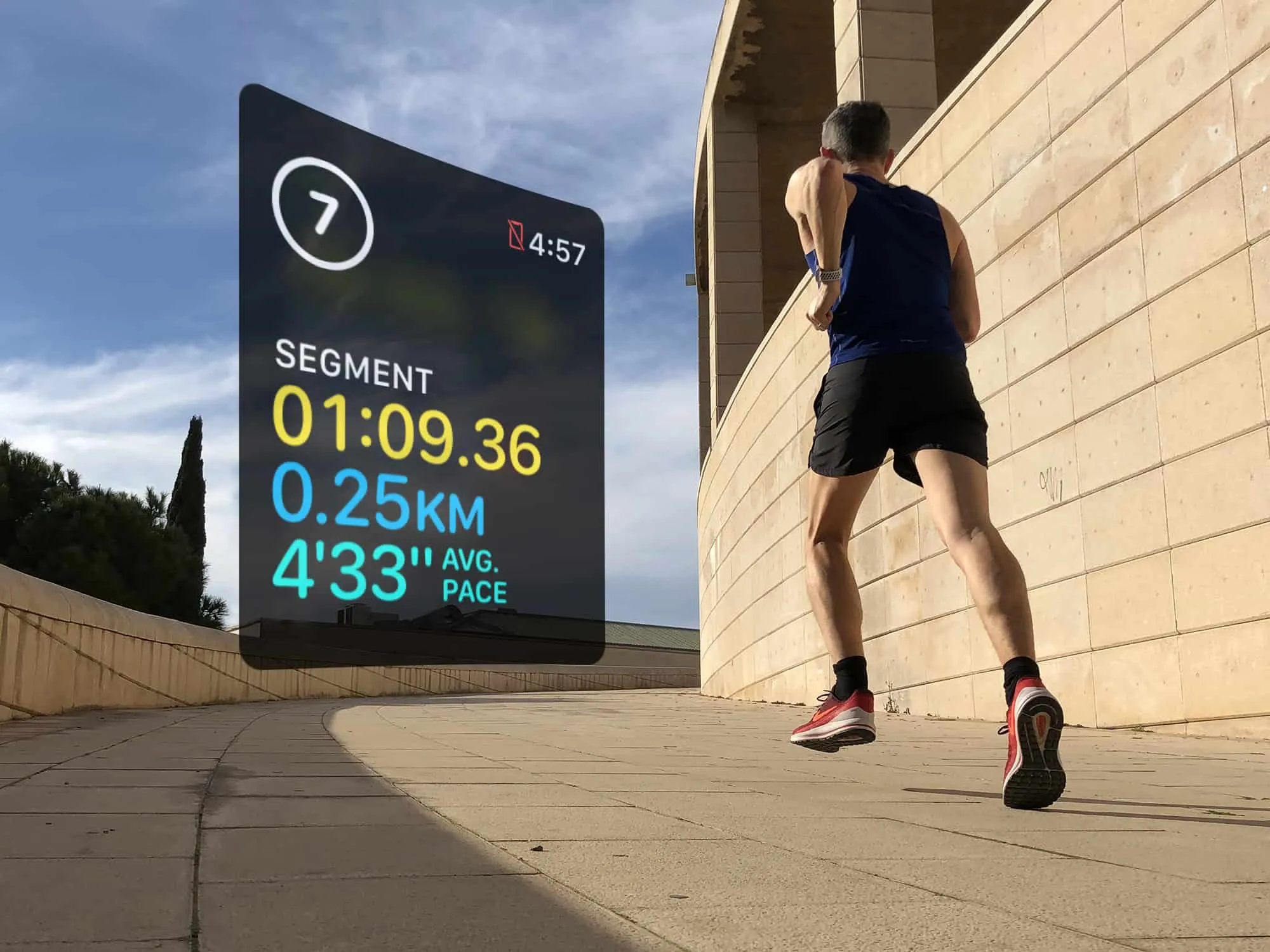For those with small wrists, Garmin offers a variety of smartwatches. Lily is the most recent arrival. This is the company's first product designed just for females.
There are, however, alternative options. The Vivoactive 4s and Fenix 6s are the two models available. These two devices, unlike Lily, are unisex and can be worn by both men and women.
You don't want a smartwatch that towers over your wrist if you have a small wrist. These three Smartwatches are excellent choices. Here's what they have in common and what they don't.
Additional Reading: What Smartwatches Are Compatible With Motorola Smartphones?
General and design comparisons of the Garmin Lily, Vivoactive 4s, and Fenix 6s
Let's start with the Garmin Lily, which is a really feminine timepiece. It is also the tiniest and thinnest of the three, measuring only 34.50 x 34.50 x 10.15 mm.
The circular, no-nonsense design is something they all have in common. However, if you're looking for something small and stylish (and you're a lady), Lily is the obvious pick.
The Vivoactive 4s is a little larger choice, with a 40mm diameter body. The 42mm diameter of the Fenix 6s is a unique feature. The Vivoactive appears to be a regular smartwatch, whilst the Fenix appears to be a sports watch.
It's a similar story when it comes to weight. The Lilly weighs only 24 grams, the Vivoactive 40 grams, and the Fenix 58 grams.
Vivoactive 4s vs. Fenix 6s: Garmin Lily vs. Vivoactive 4s
When it comes to display quality, the discrepancies continue. Lily comes with a 1 inch TFT LCD display.It has nothing to do with color. Instead, the text is presented in 16 different shades of gray. Both the Vivoactive 4s and Fenix 6s have a color memory-in-pixel that is visible in direct sunlight (MIP). The first is 1.1 inches long, while the second is 1.2 inches long.
The touchscreen is used to navigate the displays. Lily lacks physical buttons, unlike the other two do. The Vivoactive has two on the right, but the Fenix has five, two on the right and three on the left. Although a touch screen is convenient, buttons come in handy when running or cycling. When your hands are sweaty, they make it much easier to start and stop tasks.
Water-resistance
Any of these would benefit from waterproofing. Lily and Vivoactive both have 5 ATM, which implies they can be submerged to a depth of 50 meters. For the most part, that should suffice. If not, the Fenix is good to 100 m depth.
Sensors On Lily, you'll only find the fundamentals when it comes to sensors. This contains a pulse oximeter, an optical heart rate monitor, and an accelerometer. A barometric altimeter, compass, and gyroscope are included in the Vivoactive 4s. If you choose the Fenix, you'll get an ambient temperature sensor as well.
Additional Reading: Which Is The Best Non Bluetooth Fitness Tracker
Which is better: the Fitbit Ionic or the Garmin Vivoactive 3?
Built-in GPS is a significant distinction. Lily isn't affected, but the other two are. As a result, if you choose Lily, you'll have to rely on your smartphone's satellite signal (also known as Connected GPS) when exercising outside.
Life of the battery
Now we'll talk about battery life.
Lily's compact design, predictably, does not allow for a huge battery capacity. With the pulse oxi sleep tracking turned off, it can only last 5 days between batteries.
Moving up the line, the 4S can run in smartwatch mode for around a week. If you turn on the GPS, the time will be cut in half, to 5 hours.
This is where the Fenix 6s shines. It will remain ticking for up to 9 days in smartwatch mode. Even with GPS turned on, it will last longer than a day. There's also a battery saver mode that helps the device last longer.
The features of the Garmin Lily, Vivoactive 4s, and Fenix 6s
The fundamentals of activity tracking can be found on all three of them. Garmin has this side of things down pat, so data quality should be consistent across the board. They share a lot of the same sensors.
The lack of a barometric altimeter on Lily is one distinction. This means that, unlike the other two, it is unable to show the number of floors on the floor. Everything else, like steps, distance, calories, sleep, stress, body battery, respiration rate, abnormal heart rate warnings, irregular heart beat notices, and even SpO2, will be available.
All three of these solutions provide round-the-clock coverage and can track a wide range of sports. The distinction lies in the performance measures that accompany them. With Lily, you get a lot; with the Vivoactive, you get a lot; with the Fenix, you get a lot.
There's also the built-in GPS, as previously noted. This is significant since it enables phone-free training, which is beneficial to individuals who frequently run or cycle. Because Lily doesn't have it, she has to rely on a connected GPS.
Which is better: the Fitbit Ionic or the Garmin Vivoactive 3?
If you're serious about your athletic activities, you'll want the most feature-rich smartphone available. The Fenix 6 shows virtually all of Garmin's training, planning, and analytical metrics. The Vivoactive and Lily don't have any firstbeat-style measures. These come to a close at VO2max.
Golfing, outdoor activity, cycling, and swimming are some of the other functions included with the Fenix and Vivoactive. They'll be the most detailed on the Fenix, of course.
Further Reading: Best Smartwatch For OnePlus
Watches for small wrists: Garmin Lilly vs Vivoactive 4s vs Fenix 6s
All three have the capacity to display notifications, text response/reject phone calls with text (Android only), calendar, weather, and other smart features. Find My Phone and Find My Watch are two apps that can help you locate your phone and watch.
They can also control the music playing on your smartphone. In this regard, the Vivoactive 4s takes a step further by including 500 songs in its built-in storage. Music fans will welcome this because it gives them unrestricted access to their favorite sounds.
Garmin Pay is the final point of distinction. The Lily does not have it, while the Fenix and Vivoactive do. So, if you prefer to pay on the move, avoid the latter option.
Garmin Lily vs. Vivoactive 4s vs. Fenix 6s: What's the Difference?
There are a lot of differences between these three smartwatches. If you want something feminine on your wrist and aren't concerned with comprehensive performance numbers, Lily is the obvious pick. It has all of the essential activity monitoring features, so you'll be covered. It's worth noting that it lacks built-in GPS, so you'll have to rely on Connected GPS.
The Vivoactive 4S is a mid-range option for guys with small wrists. It's a wonderful alternative for individuals who take their sports seriously. The Vivoactive 4s features built-in music storage, which gives it an advantage over the other two. This may be significant to some.
The price of the sacrifice is that it has a larger physique than Lily. Not to mention the significant price difference. The watch begins at $350, while Lily is available for $200.
For those who want all of Garmin's bells and whistles, the Fenix 6s is the way to go. It provides a comprehensive set of performance measurements, as well as detailed sports profile-specific statistics and long battery life. It is, however, the largest and most expensive of the bunch (starting at $550).
Should you upgrade to a Garmin Forerunner 935 or Fenix 6s?
The Fenix 6s from Garmin
Additional Reading: Which is better: Fitbit Charge 5 or Samsung Galaxy Watch 4?
Which is better: the Fitbit Ionic or the Garmin Vivoactive 3?
As a result, it is entirely dependent on your requirements. Are you looking for the essentials in a lovely feminine design? Do you require anything that will keep track of your runs and other forms of exercise in greater detail?
Veronica is a culture reporter at Collaborative Research Group, where she writes about food, fitness, weird stuff on the internet, and, well, just about anything else. She has also covered technology news and has a penchant for smartphone stories. .
Leave a reply
Your email address will not be published. Required fields are marked *Recent post

Is It Possible to Browse the Internet on a Smartwatch?

The precision of Apple Watches for HIIT Workouts

What Do The Jewels In A Watch Consist of?

